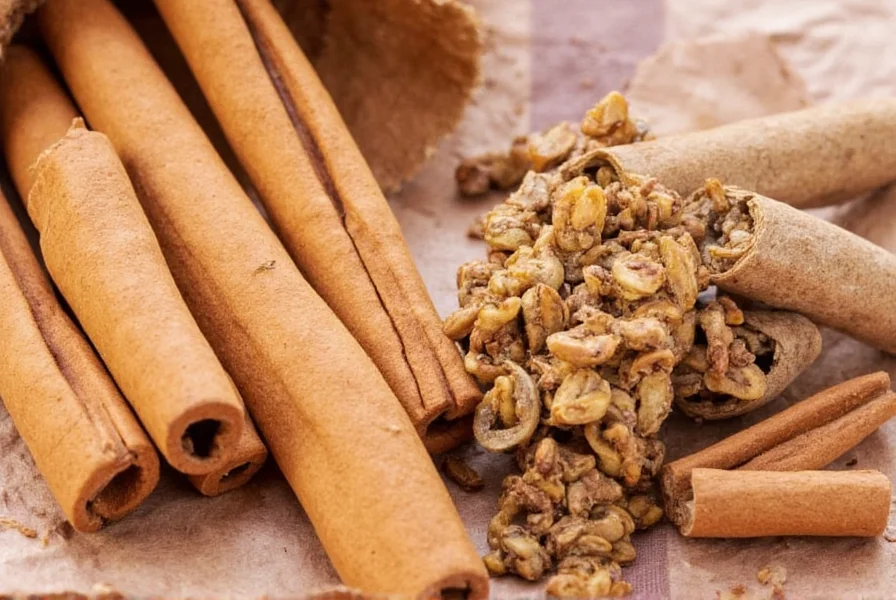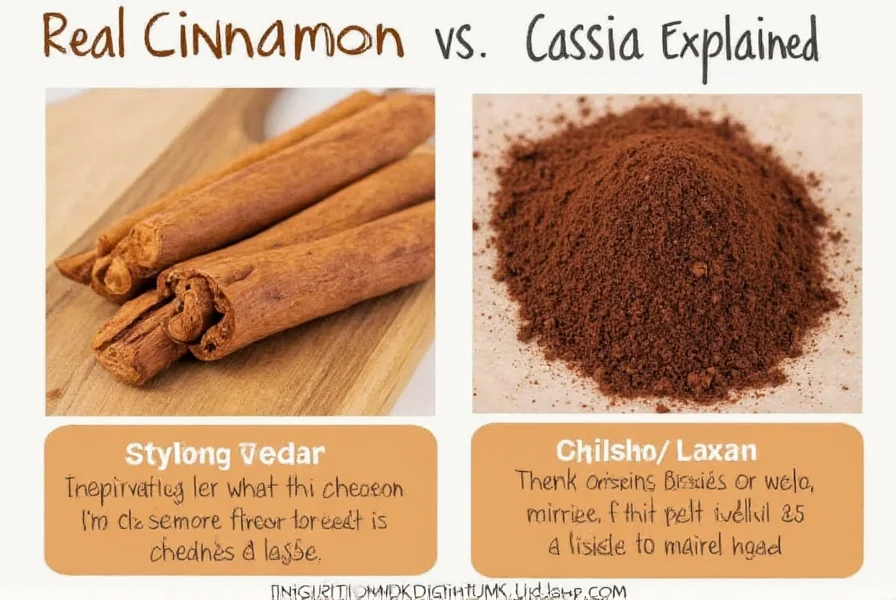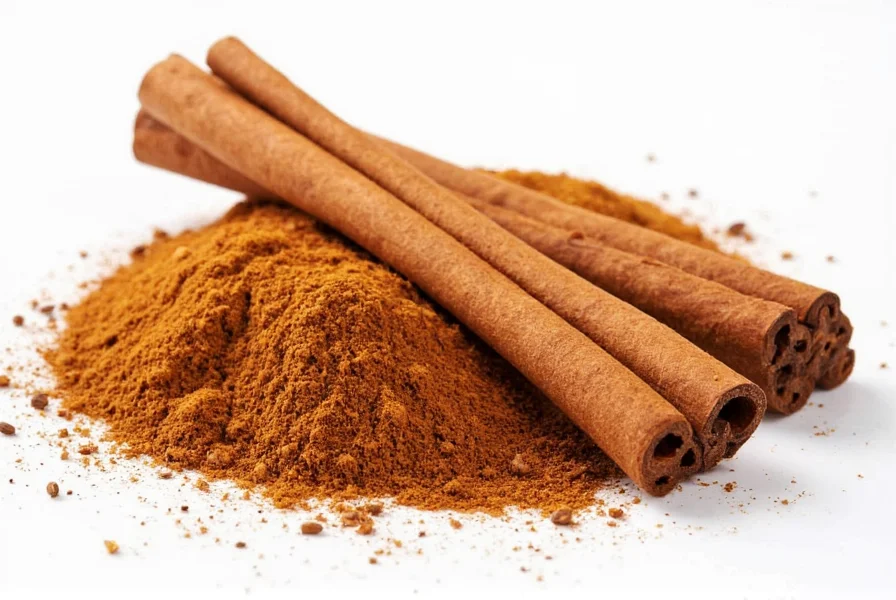When you reach for that familiar spice jar labeled “cinnamon,” you're likely using Cassia cinnamon, not the true “real cinnamon” known as Ceylon. This distinction matters more than most consumers realize, affecting both culinary results and health implications. Understanding the difference between Ceylon and Cassia cinnamon empowers you to make informed choices about this beloved spice.
The Cinnamon Identity Crisis
For centuries, Ceylon cinnamon (Cinnamomum verum, meaning “true cinnamon”) was the original “cinnamon” known in European markets. Its delicate, sweet flavor made it a prized luxury. However, when Cassia cinnamon from China entered global trade, its stronger, spicier profile and lower cost led to it dominating supermarket shelves. Today, approximately 90% of “cinnamon” sold in the United States and Europe is actually Cassia, creating widespread confusion about what constitutes real cinnamon.

Physical and Flavor Differences: How to Tell Them Apart
Identifying real cinnamon requires attention to specific characteristics. Ceylon cinnamon features multiple thin, papery layers that form a delicate, hollow quill resembling a cigar. When broken, it crumbles easily. Cassia, by contrast, forms a single thick, hard roll that's difficult to break.
| Characteristic | Ceylon Cinnamon (Real) | Cassia Cinnamon |
|---|---|---|
| Origin | Sri Lanka, India, Madagascar | China, Indonesia, Vietnam |
| Quill Structure | Multiple thin layers, soft, brittle | Single thick layer, hard, dense |
| Color | Light tan to pale brown | Dark reddish-brown |
| Taste Profile | Sweet, delicate, citrusy notes | Strong, spicy, slightly bitter |
| Coumarin Content | 0.017 g/kg (negligible) | 2.1-6.97 g/kg (high) |
Health Implications: Why the Type Matters
The most significant difference between real cinnamon and Cassia involves coumarin, a naturally occurring compound. While Ceylon contains minimal coumarin, Cassia has substantially higher levels. The European Food Safety Authority established a tolerable daily intake of 0.1 mg coumarin per kilogram of body weight. For a 60 kg adult, this equals just 6 mg daily—reached by consuming approximately half a teaspoon of Cassia cinnamon.
Chronic high coumarin intake may cause liver damage in sensitive individuals and poses particular concerns for children and those with pre-existing liver conditions. This makes understanding how to identify real cinnamon crucial for regular consumers. While Cassia offers health benefits like blood sugar regulation, moderation becomes essential due to its coumarin content.
Where to Find Authentic Ceylon Cinnamon
Sourcing genuine Ceylon cinnamon requires careful label reading. Look for specific indicators: “Cinnamomum verum,” “Cinnamomum zeylanicum,” or “True Cinnamon.” Reputable spice companies often specify the cinnamon type. Specialty stores focusing on Sri Lankan products or dedicated spice merchants typically carry authentic Ceylon.
When shopping online, check product descriptions thoroughly. Terms like “Ceylon cinnamon,” “Sri Lankan cinnamon,” or “Mexican cinnamon” (which usually refers to Ceylon) indicate the genuine article. Avoid vague labels simply stating “cinnamon” without specification, as these almost always contain Cassia.

Culinary Applications: Maximizing Flavor Profiles
Chefs and home cooks benefit from understanding when to use real cinnamon versus Cassia. Ceylon's delicate flavor shines in dishes where cinnamon should complement rather than dominate—think custards, fruit compotes, and delicate baked goods. Its subtle sweetness works beautifully in Middle Eastern and Indian rice dishes.
Cassia's robust profile stands up well in hearty dishes like stews, curries, and spice-heavy baked goods where its stronger flavor won't get lost. For beverages like chai, many prefer Cassia's intensity, though Ceylon creates a more nuanced tea experience. When substituting between types, use 1.5 times more Ceylon to match Cassia's flavor impact.
Storage and Freshness Considerations
Both cinnamon types lose potency over time, but proper storage extends their shelf life. Keep cinnamon in airtight containers away from light and heat. Ground cinnamon remains potent for 6-12 months, while whole quills maintain quality for 1-2 years. To test freshness, crush a small piece between your fingers—fresh cinnamon releases a strong, sweet aroma immediately.
Real cinnamon enthusiasts note that Ceylon's delicate oils evaporate faster than Cassia's robust compounds, making proper storage even more critical for preserving its subtle flavor profile. For maximum flavor impact, consider grinding whole Ceylon quills just before use.
Making Informed Choices
Understanding the difference between Ceylon and Cassia cinnamon transforms how you use this everyday spice. For occasional use in recipes calling for small amounts, Cassia presents minimal health concerns while delivering that familiar cinnamon punch. However, for daily consumption—like in morning oatmeal or smoothies—opting for Ceylon provides peace of mind regarding coumarin exposure.
The choice ultimately depends on your usage patterns and health considerations. By learning how to identify real cinnamon and understanding its unique properties, you gain greater control over your culinary creations and dietary choices. This knowledge represents a small but meaningful step toward more informed spice consumption.











 浙公网安备
33010002000092号
浙公网安备
33010002000092号 浙B2-20120091-4
浙B2-20120091-4